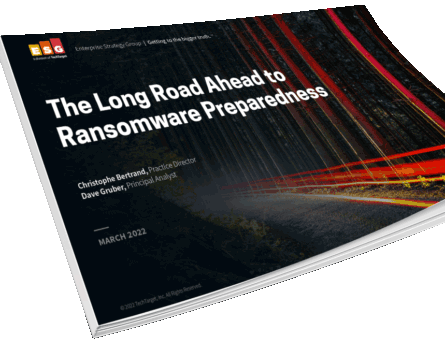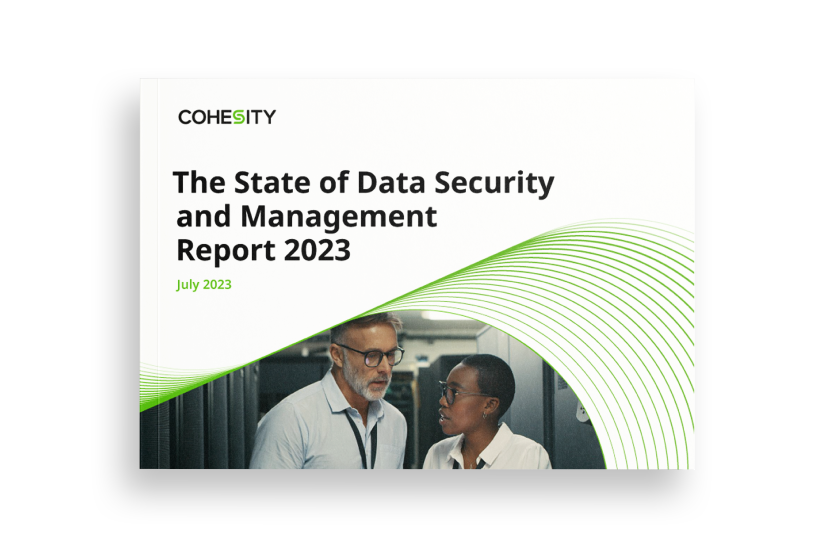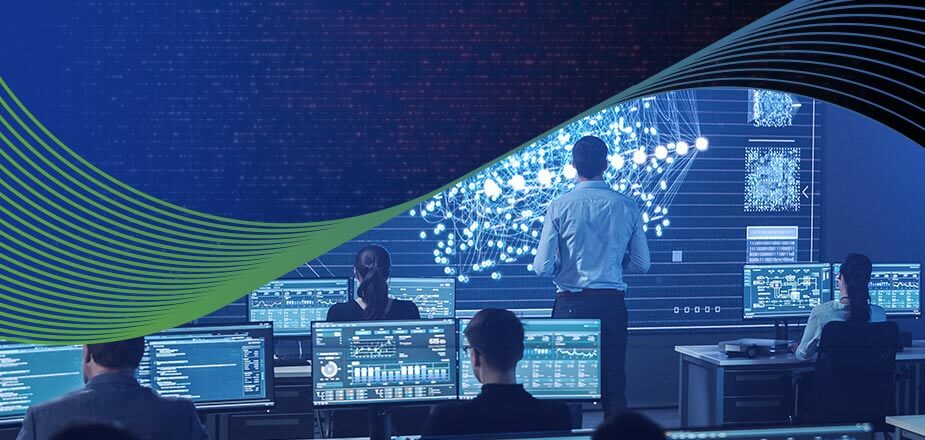What are anti-ransomware solutions?
Anti-ransomware solutions are technologies, services, and training that work proactively and reactively to help companies counter ransomware attacks and not pay ransom.
Anti-ransomware software, coupled with strategic processes and best practices, can help organizations better defend their data against cyberattacks. With anti-ransomware solutions, organizations protect their data, applications, and infrastructure from increasingly sophisticated ransomware attacks and rapidly recover that data, should a breach occur.
Anti-ransomware solutions, encompassing backup and recovery, disaster recovery, data isolation with cyber vaulting, suspicious activity detection, and other software, are an important part of an enterprise cyber resilience strategy.
Why are anti-ransomware solutions important?
Anti-ransomware solutions are important because successful ransomware attacks are costly to businesses in terms of losses of productivity, revenue, rebuilding time, and brand trust.
On average, companies are spending $1.85 million to rectify ransomware attack impacts without paying the ransom. In aggregate, global ransomware damage costs are predicted to exceed $265 billion by 2031, according to Cybersecurity Ventures. Cybercriminals are finding the ransomware business so lucrative that year-over-year growth continues to rise at staggering rates. Because some companies only focus on preventative solutions, organizations are vulnerable. Organizations need to be able to not only withstand but recover from attacks, because in many cases even after paying ransom, very few organizations fully recover all of their data.
Is there any solution for ransomware?
Cybercriminals continue to evolve ransomware vectors—in the types and severity of attacks—so there is not a guaranteed solution for ransomware.
After navigating malware that encrypted production data (ransomware 1.0) and then backup systems (ransomware 2.0), organizations are currently dealing with ransomware 3.0. It combines data encryption (the locking up of data and systems for ransom) with data exfiltration (the stealing of data with the threat of sharing it) in a double-extortion scheme. With not only individuals but also nation-states now cashing in on ransomware threat development, it’s unlikely enterprises will have a foolproof solution for ransomware anytime soon.
How much does ransomware cost is a complex question for organizational leaders to answer because the blast of ransomware goes well beyond downtime, to loss of revenue, productivity, brand reputation, and more. That’s why companies need anti-ransomware solutions not only to withstand, but recover from ransomware.
What is the best anti-ransomware solution for recovery?
The best anti-ransomware solution for recovery is a comprehensive data security and data management platform with an ecosystem of security products and services. This approach to countering ransomware empowers organizations to:
- Protect their backup data and systems, including a wide variety of data sources in on-premises, multiple clouds, and edge environments
- Reduces the risk of unauthorized access to critical systems and data
- Identifies and detects attacks to stop encroachment before it harms business operations
- Strengthens the security posture of the enterprise through integrations with leading security software and APIs
- Ensures organizations can rapidly recover data at scale
How to prevent ransomware?
Organizations can take advantage of anti- ransomware software and anti-malware solutions with the following capabilities to help prevent ransomware attacks:
- Identification — With comprehensive visibility into all of their data across onsite and multicloud locations plus automation to identify threats, organizations can proactively prepare to discover threats.
- Protection — Data security based on Zero Trust principles—”never trust, always verify”—and with immutable snapshots, multifactor authentication, and granular role-based access boosts enterprises’ ability to counter ransomware.
- Detection — Advanced technologies such as machine learning that can analyze and find unusual patterns can also help teams combat ransomware.
How often do ransomware attacks occur?
By 2031, it’s estimated that ransomware will attack a business every 2 seconds—costing its victims $265B annually.
Who makes ransomware?
Cybercriminals’ success in getting individuals and organizations alike to pay large sums of ransom to unlock encrypted data has resulted in an industry of ransomware development.
Today, a single hacker, a group or company of bad actors, and even nation-states make ransomware. Some of the most popular ransomware gangs today are the CONTI, LockBit, and REvil/Sodinokibi groups.
How to protect against ransomware?
Protection against ransomware starts with comprehensive cybersecurity. Safeguards that protect data and reduce the risk of unauthorized access include immutable backup snapshots, immutable file system, encryption inflight and at rest, WORM (write once, read many), multifactor authentication, granular role-based access, no service back door, modern data isolation with cyber vaulting, and more.
How does anti-ransomware work?
One or more anti-malware solutions or anti-ransomware solutions can work in concert to keep data and organizations’ reputations safe.
First, teams can use a comprehensive data security and data protection platform to store data in an immutable backup. That ensures it can’t be prematurely deleted, encrypted, or modified. Should production data become compromised, teams can use that backup to start a rapid, full recovery to a clean copy of the data. In addition to immutable backups, organizations can take advantage of AI/ML technologies in a robust data security and data management platform to analyze data for behaviors that are inconsistent with regular behaviors as this can indicate the start of a ransomware attack. Similarly, some anti-ransomware software allows for deep data inspection to search for vulnerabilities such as unencrypted passwords that can be used by bad actors to exploit systems. Another way anti-ransomware works is by isolating data in a cyber vault (rather than a physical offsite location) to speed recovery and continue to meet business service-level agreements (SLAs) should a data loss event such as ransomware occur. These are just a few examples of how anti-ransomware solutions work yet the best software will include a host of capabilities to counter cyberthreats.
How often is ransomware paid?
More than six in ten companies worldwide paid to recover data compromised in a ransomware attack in 2022, according to Statista. Yet only seven in ten of the organizations that paid ransom recovered their data.
Cohesity and anti-ransomware solutions
An anti-ransomware solution for data recovery, the Cohesity data security and data management solutions consolidate infrastructure silos onto a single platform for maximum security and reduction of an organization’s attack surface. With anti-ransomware software from Cohesity, organizations have the capabilities they need to keep bad actors at bay. These include the ability to:
- Protect backup data and systems — Cohesity delivers immutable snapshots, WORM (write once, read many), data encryption, configuration audit and scanning, fault tolerance, and modern, flexible data isolation with a cyber vault to protect a wide variety of data sources in on-premises, multiple clouds, and edge environments.
- Reduce the risk of unauthorized access — Multifactor authentication (MFA), monitored modification of root-level or critical system changes, and role-based access control are included in the Cohesity anti-ransomware protection software.
- See and detect attacks to stop encroachment — Cohesity possesses artificial intelligence/machine-learning powered insights with anomaly detection near real time, automated alerts, and cyber vulnerability discovery as part of an anti-malware solution.
- Strengthen enterprise security postures with platform extensibility — Cohesity anti-ransomware solutions include pre-built and customizable integrations with leading security orchestration, automation and response (SOAR) as well as security information event management (SIEM) solutions, plus value-added application interoperability through an API-rich architecture.
- Ensure rapid recovery of data at scale — Cohesity not only provides instant recovery at scale, but it supports both clean recovery and in-place recovery, too. Organizations can evaluate their ransomware readiness against this checklist.












